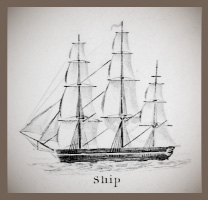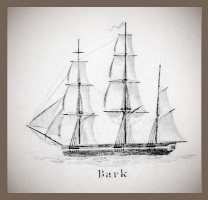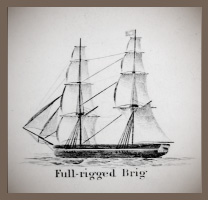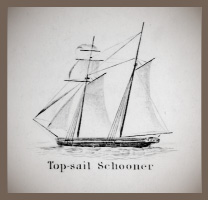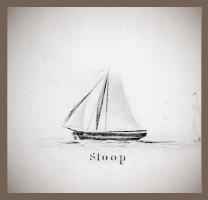Rigs of Vessels
Ship
A three-masted vessel having square sails on all three masts. Ships were the largest vessels used in pursuing whales, averaging 325 tons. A good-sized ship could carry five whaleboats and employ a crew of about 36 men, staying out for 3 or 4 years if necessary.
Bark
A three-masted vessel having square sails on the forward two masts and a single fore-and-aft sail on the third mast. This rig was easier to handle, and many ships were later rerigged as barks for this reason. Also averaging about 325 tons, barks, like ships, had a large crew and could make a voyage of three to four years. A steam bark is a bark with added auxiliary power, and therefore shows a smoke stack
Brig
A two-masted vessel usually having square sails on both masts and a for-and-aft sail on the rear mast. Brigs carried, on average, three whaleboats and employed a crew of about 22 men.
Schooner
A two-masted vessel having fore-and-aft sails on both masts. These small whaling vessels averaged 100 tons, employed less than 20 men, and made short voyages of less than a year. They were the popular vessel at the end of the whaling industry.
Sloop
Used in the early years of the whaling industry, small colonial sloops traditionally had one mast. They were rigged with a fore-and aft sail and often a square topsail. They averaged well under 100 tons, usually 60 feet in length or less, and employed 12-15 men, and usually carried two whaleboats. In the early days of whaling, these vessels only stayed out for a few weeks, although their voyages could be longer once tryworks were installed on shipboard.
